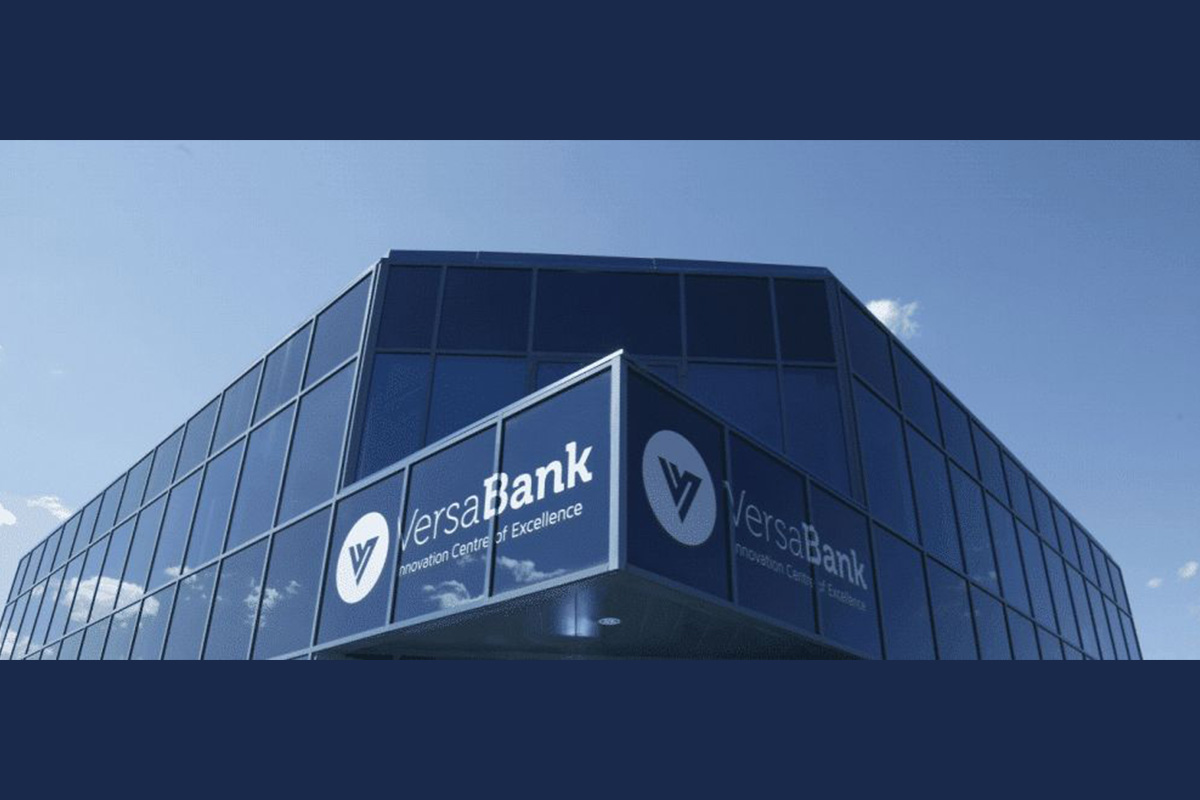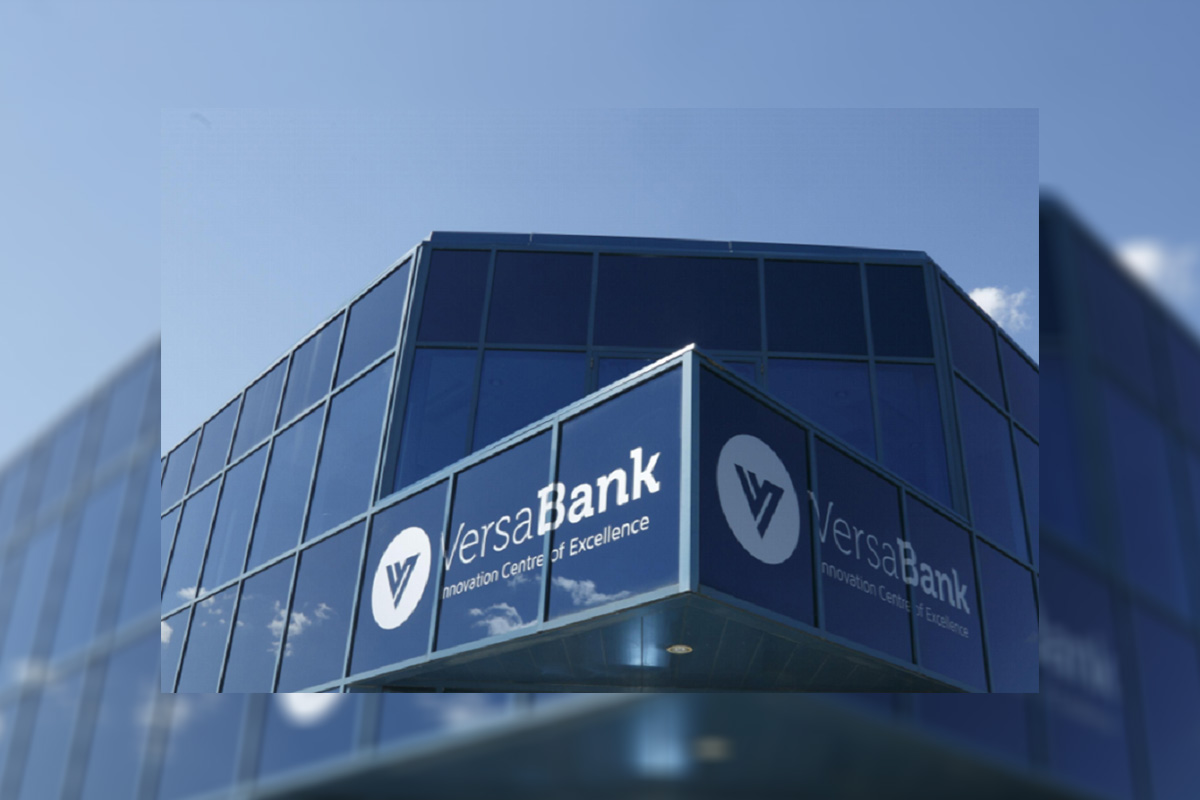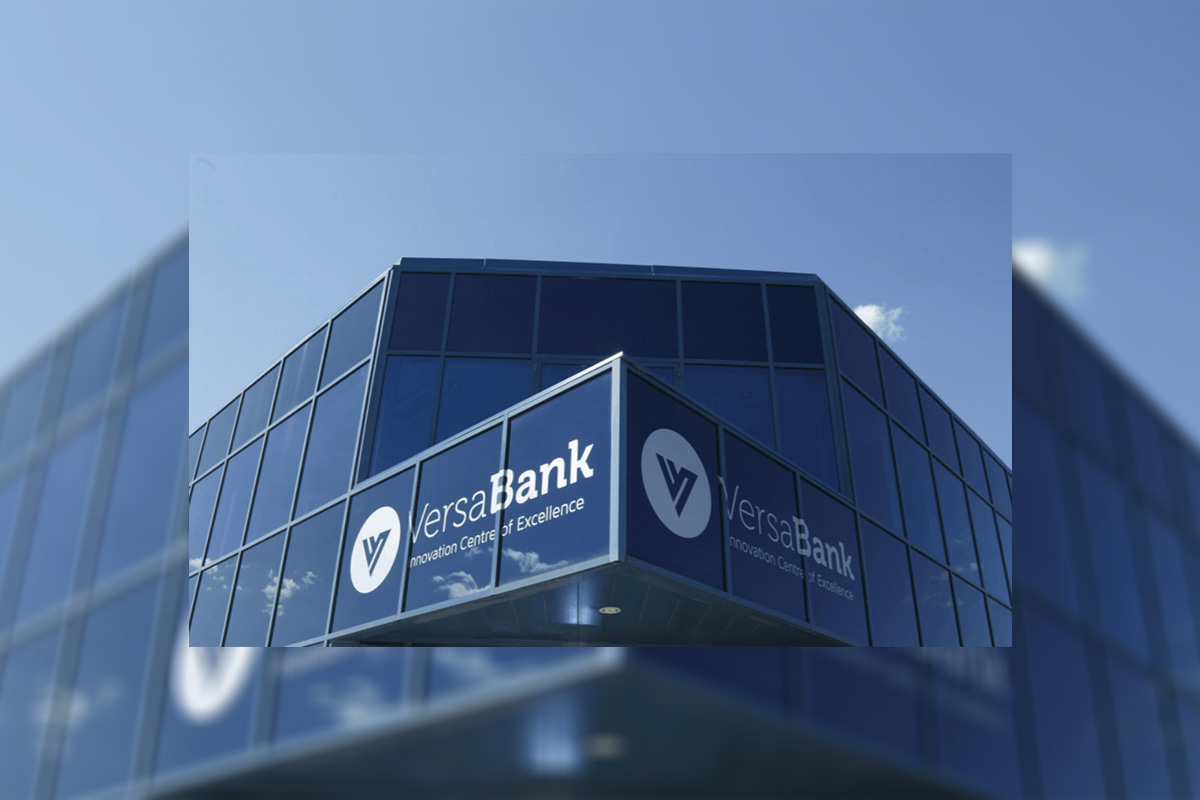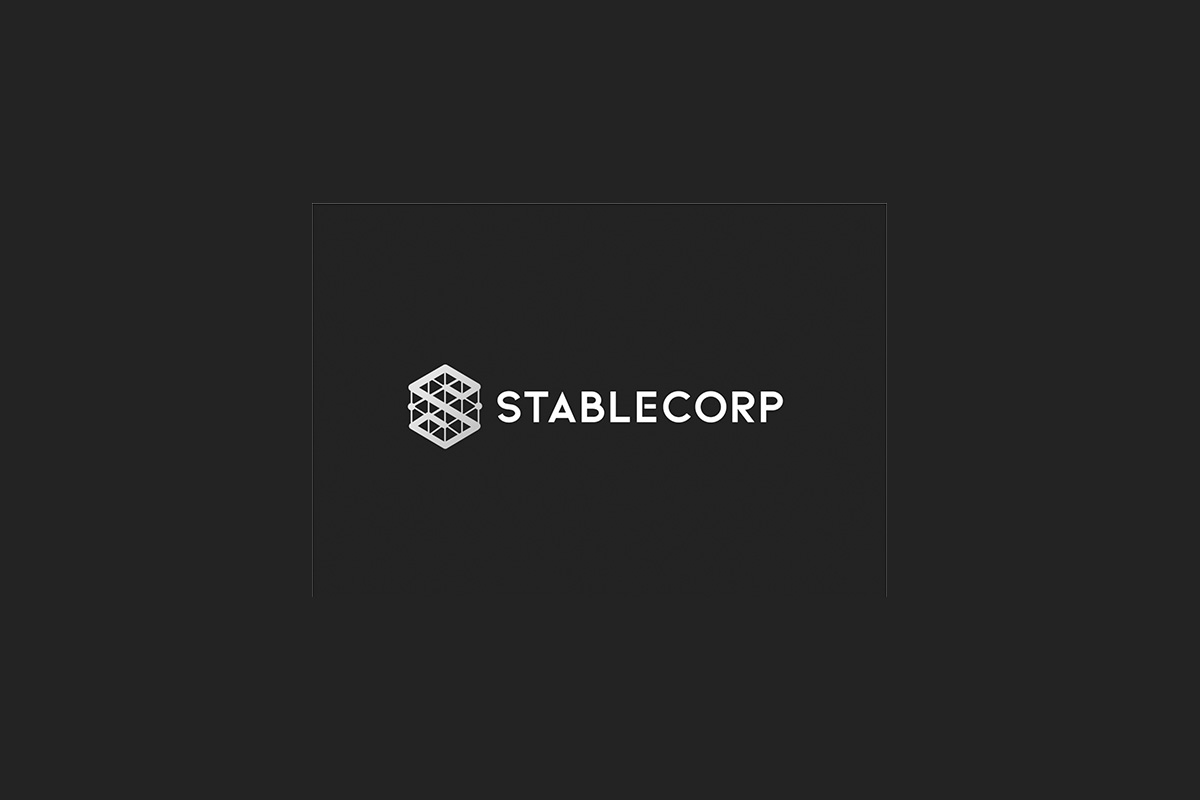VersaBank (“VersaBank” or the “Bank”) (TSX: VB), a North American leader in business-to-business digital banking, as well as technology solutions for cybersecurity, today reported its results for the second quarter of 2021 ended April 30, 2021.
Financial Summary
|
(unaudited)
|
As at or for the three months ended
|
|
As at or for the six months ended
|
|
|
April 30
2021
|
January 31
2021
|
|
April 30
2020
|
|
|
April 30
2021
|
April 30
2020
|
|
|
(thousands of Canadian dollars except per share amounts)
|
Change
|
Change
|
|
Change
|
|
Financial results
|
|
|
|
|
|
|
|
|
|
|
Revenue
|
$
|
15,970
|
$
|
15,422
|
4%
|
$
|
14,485
|
10%
|
|
$
|
31,392
|
$
|
28,067
|
12%
|
|
Cost of funding
|
1.28%
|
1.42%
|
(10%)
|
1.75%
|
(27%)
|
|
1.35%
|
1.80%
|
(25%)
|
|
Net interest margin
|
2.96%
|
2.86%
|
3%
|
3.08%
|
(4%)
|
|
2.91%
|
3.01%
|
(3%)
|
|
Core cash earnings(1)(2)
|
7,940
|
7,278
|
9%
|
7,096
|
12%
|
|
15,218
|
14,181
|
7%
|
|
Core cash earnings per common share(1)
|
0.38
|
0.34
|
11%
|
0.34
|
11%
|
|
0.72
|
0.67
|
8%
|
|
Net income
|
5,744
|
5,290
|
9%
|
5,149
|
12%
|
|
11,034
|
10,290
|
7%
|
|
Net income per common share basic and diluted
|
0.25
|
0.22
|
14%
|
0.22
|
14%
|
|
0.47
|
0.44
|
7%
|
|
Balance sheet and capital ratios
|
|
|
|
|
|
|
|
|
|
|
Total assets
|
2,139,757
|
2,044,976
|
5%
|
1,966,369
|
9%
|
|
2,139,757
|
1,966,369
|
9%
|
|
Book value per common share(1)
|
$
|
11.06
|
$
|
10.90
|
2%
|
$
|
10.37
|
7%
|
|
$
|
11.06
|
$
|
10.37
|
7%
|
|
Common Equity Tier 1 (CET1) capital ratio
|
12.52%
|
12.48%
|
0%
|
13.50%
|
(7%)
|
|
12.52%
|
13.50%
|
(7%)
|
|
Total capital ratio
|
18.89%
|
14.58%
|
30%
|
15.85%
|
19%
|
|
18.89%
|
15.85%
|
19%
|
|
Leverage ratio
|
10.46%
|
11.40%
|
(8%)
|
11.48%
|
(9%)
|
|
10.46%
|
11.48%
|
(9%)
|
|
|
|
|
|
|
|
|
|
|
|
|
(1) Certain highlights include non-GAAP measures. See definitions under ‘Basis of Presentation’ in the Q2 2021 Management’s Discussion and Analysis.
|
|
(2) Core Cash Earnings is calculated as pre-tax earnings less non-core operating income and expenses.
|
Highlights for the Second Quarter of 2021
- Positive trends continue across all key financial metrics sequentially and substantially all key financial metrics year-over-year, as the Bank continued to lower its cost of funding, and continued to redeploy elevated cash balances (accumulated in mid-2020 in response to the uncertainty associated with the pandemic) into low-risk, higher yielding lending assets;
- Total revenue increased 10% year-over-year and 4% sequentially, to a record $16.0 million;
- Net income increased 12% year-over-year and 9% sequentially to a record3 $5.7 million;
- Core cash earnings increased 12% year-over-year and 9% sequentially to a record $7.9 million;
- Cost of funds decreased 47 bps, or 27%, year-over-year and 14 bps, or 10%, sequentially to a record 1.28%;
- Net interest margin decreased, 12 bps, or 4% year-over-year, however, increased 10 bps, or 3%, sequentially, to 2.96%, which was dampened by atypically high cash balances following the Bank’s decision amidst the uncertainty near the beginning of the COVID-19 pandemic to increase cash balances out of an abundance of caution. As it has since the third quarter of fiscal 2020, the Bank continued to redeploy its cash balances to higher interest earning loans in the second quarter of 2021, which is expected to contribute to a higher net interest margin;
- A recovery of credit loss provisions in the amount of $312,000 compared to a provision for credit losses in the amount of $420,000 for the second quarter of 2020 and a provision for credit losses in the amount of $57,000 for the first quarter of 2021; and
- Loans increased 2%, or $36 million, to a record $1.83 billion sequentially, driven primarily by growth in the Point-of-Sale Loan and Lease portfolio.
- Announced its intention to launch a revolutionary, highly-encrypted digital deposit offering, VCAD, with each VCAD unit representing a one-dollar deposit with the Bank. Facilitated by state-of-the-art blockchain technology, VCAD is easily transferable, enabling it to be used as a digital currency, with the highest level of stability and security amongst digital currencies available today, with each VCAD represented by a deposit with an investment-grade issuer;
- On April 30, 2021 the Bank completed a private placement of non-viability contingent capital (“NVCC”) compliant fixed to floating rate subordinated notes payable, (“the Notes”) in the principal amount of USD $75.0 million (CAD $92.1 million). Egan-Jones Ratings Company assigned the Notes and the Bank investment grade ratings of “A- and “A”, respectively;
- Also on April 30, 2021, the Bank redeemed all of its outstanding Non-Cumulative Series 3 preferred shares (NVCC) using cash on hand (aggregate of $16.8 million);
- Net income from wholly-owned subsidiary, DRT Cyber Inc.’s (“DRT Cyber”) penetration testing business, Digital Boundary Group, one of North America’s premier information technology security assurance services firms, increased more than 60% year-over-year for the five-month period since its acquisition in November 2020, and
- DRT Cyber released its new email privacy compliance platform, RAVEN, the first and only fully automated and integrated solution that provides complete compliance with all major global anti-SPAM legislation, as an external beta to a select group of customers prior to full market release.
Management Commentary
“VersaBank’s second quarter was once again highlighted by a number of record results across our core Digital Banking operations, which were complemented by the profitable contribution of our Cyber-Security subsidiary, resulting in the highest quarterly net income in our history3,” said David Taylor, President and CEO, VersaBank. “It is especially encouraging that, even amidst a period of strong loan growth year-to-date, our strong performance was dampened by our still higher than typical cash balances, as well as the pandemic-related restrictions, which impacted loan origination in both our Point-of-Sale and Commercial Real Estate lending businesses.”
“Importantly, our results were once again reflective of the earnings power and significant growth potential of our Digital Banking strategy – addressing unmet needs in banking through innovative solutions based on our proprietary software platform through a highly efficient, partner-based model. With the additional capital raised through our subordinated note offering in April, opportunities to continue to lower our cost of funds, our Point-of-Sale and Commercial Lending businesses poised to benefit from the relaxation of pandemic-related restrictions and the launch of our Instant Mortgage offering on the horizon, our strong performance in the first half of fiscal 2021 positions VersaBank for an even better second half, and a return to our track record of strong year-over-year growth in annual profitability.”
Mr. Taylor added, “As our core Digital Banking operations delivered record results, the second quarter was also marked by strong progress in our DRT Cyber business. We are now nearly six months with Digital Boundary Group as part of our Cyber-Security business. Net income has grown substantially year-over-year and we are making steady progress in our strategy to capitalize on the significant business development opportunities from the combined teams to drive continued long-term growth, as both business and government grapple with an increasing number of high-consequence cyber-attacks that can be defended through regular penetration testing.”
|
(3)
|
Excluding an $8.8 million one-time, non-cash gain resulting from the recognition of a Deferred Tax Asset upon the amalgamation of Pacific & Western Bank and PWC Capital Inc. in the first quarter of 2017.
|
Update on Management of COVID-19 Impact
As a digital bank with a low-risk business-to-business, partner-based model, VersaBank remains well insulated from many of the negative influences of COVID-19 and our staff continues to work remotely leveraging our fully functional Work-From-Home solution which was a natural and seamless evolution of the Bank’s branchless, technology-driven model. Despite the fact that we currently have no loans on our balance sheet that are subject to payment deferrals, no impaired loans and no loans in arrears our credit risk department continues to operate at a heightened level of awareness, ensuring that our origination and underwriting practices remain highly disciplined and focused. Further, the Bank continues to maintain liquidity levels that are higher than normal, or more specifically higher than pre-COVID-19 levels, however; management expects that liquidity will normalize prior to the end of fiscal 2021. Despite the business and operational challenges imposed by the pandemic, the Bank continues to focus on enhancing Core Cash Earnings performance by concentrating on niche markets that support more attractive pricing for its products and by leveraging its diverse deposit gathering network which provides efficient access to a range of low-cost deposit sources in order to maintain a lower cost of funds.
Financial Review
Net Income – Net income for the quarter was $5.7 million, or $0.25 per common share (basic and diluted), compared to $5.3 million, or $0.22 per common share (basic and diluted) last quarter and $5.1 million, or $0.22 per common share (basic and diluted), for the same period a year ago. The quarter-over-quarter trend was a function primarily of higher revenue and a recovery of credit loss provisions, offset partially by higher non-interest expenses. The year-over-year trend was a function primarily of higher revenue, including strong non-interest income contribution from DBG and recovery of credit loss provisions, offset partially by higher non-interest expense. Year-to-date net income and EPS were $11.0 million and $0.47 respectively, compared to $10.3 million and $0.44 for the same period a year ago as a function primarily of higher revenues and a recovery of credit loss provisions, offset partially by higher non-interest expense.
Net Interest Margin – Net interest margin (or spread) for the quarter was 2.96% compared to 2.86% last quarter and 3.08% for the same period a year ago. The quarter-over-quarter trend was a function primarily of the continued redeployment of cash into higher yielding lending assets over the course of the current quarter and lower cost of funds. The year-over-year trend was a function primarily of higher yields earned in the comparative period as a function primarily of higher fees recognized on the negotiated, early repurchase of a portfolio of loan and lease receivables by one of the Bank’s point of sale origination partners and lower yields earned on floating rate lending assets attributable primarily to the accommodative monetary policy established by the Bank of Canada early in the spring of 2020, offset partially by lower cost of funds. Year-to-date net interest margin was 2.91% compared to 3.01% for the same period a year ago.
Net Interest Income – Net interest income for the quarter was $15.1 million compared to $14.4 million last quarter and $14.5 million for the same period a year ago. The quarter-over-quarter and year-over-year trends were a function primarily of higher interest income earned on the Bank’s Commercial Real Estate lending portfolio, redeployment of cash into higher yielding lending assets and lower interest expense attributable largely to growth in the operating accounts that the Bank makes available to Canadian insolvency professionals. Year-to-date net interest income was $29.5 million compared to $28.0 million for the same period a year ago.
Non-Interest Expenses – Non-interest expenses for the quarter were $8.3 million compared to $8.1 million last quarter and $6.9 million for the same period a year ago. The quarter-over-quarter trend was a function primarily of the consolidation of the operating expenses of Digital Boundary Group, offset partially by lower salary and benefits expense in the current period. The year-over-year trend was a function primarily of the consolidation of the operating expenses of Digital Boundary Group, increased salary and benefits expense, and investments in the Bank’s corporate development initiatives. Year-to-date non-interest expenses were $16.4 million compared to $13.6 million for the same period a year ago.
Provision for/Recovery of Credit Losses – The Bank recognized a recovery of credit loss provisions for the quarter in the amount of $312,000 compared to a provision for credit losses in the amount of $57,000 last quarter and a provision for credit losses in the amount of $490,000 for the same period a year ago. The quarter-over-quarter and year-over-year trends were a function primarily of changes in the forward-looking information used by the Bank in its credit risk models in the current quarter as well as a recovery of a prior period write off in the amount of $116,000. The year-over-year trend also reflects net remeasurements of expected credit losses attributable to the impact of planned refinements to specific real estate asset loan and credit data inputs introduced in the third quarter of fiscal 2020.
Core Cash Earnings – Core cash earnings for the quarter were $7.9 million or $0.38 per common share (basic and diluted), compared to $7.3 million or $0.34 per common share (basic and diluted) last quarter and $7.1 million or $0.34 per common share (basic and diluted) for the same period a year ago. The quarter-over-quarter and year-over-year trends were a function primarily of the factors set out above.
Capital – At April 30, 2021, VersaBank’s Total regulatory capital was $333 million compared to $251 million last quarter and $246 million a year ago. The quarter-over-quarter and year-over-year trends were a function primarily of the completion of a private placement of 5% non-viability contingent capital compliant fixed to floating rate subordinated notes in the principal amount of USD $75 million and higher core cash earnings, offset partially by the redemption of the Bank’s outstanding Non-cumulative Series 3 Preferred Shares. The year-over-year trend was also impacted by the regulatory adjustment attributable to the goodwill and intangible assets acquired from DBG. At April 30, 2021, VersaBank’s CET1 capital ratio was 12.52%, compared 12.48% last quarter and 13.50% a year ago. The quarter-over-quarter and year-over-year trends were a function of retained earnings growth, tax provision recoveries related to the Bank’s deferred tax asset, and changes to the Bank’s risk-weighted asset balances and composition. The year-over-year trend also reflects the addition of goodwill and intangible assets acquired via the purchase of DBG and the inclusion of eligible expected credit loss allowance amounts related to the transitional arrangements pertaining to the capital treatment of expected loss provisioning as set out by the Office of the Superintendent of Financial Institution (OSFI).
Credit Quality — Gross impaired loans at April 30, 2021 were $nil, compared to $6.5 million a year ago. The prior year’s balance was comprised of a single loan which was repaid in full in the fourth quarter of 2020. The Bank’s allowance for expected credit losses, or ECL at April 30, 2021 was $1.6 million compared to $1.8 million in the first quarter and $2.4 million a year ago. The quarter-over-quarter and year-over-year trends were a function primarily of changes in the forward-looking information used by the Bank in its credit risk models in the current quarter. The year-over-year trend also reflects net remeasurements of expected credit losses attributable to the impact of planned refinements to specific real estate asset loan and credit data inputs introduced in the third quarter of fiscal 2020.
VersaBank’s Provision for Credit Losses (PCL) ratio continues to be one of the lowest in the industry, reflecting the very low risk profile of the Bank’s lending portfolio, enabling it to generate superior net interest margins by offering high-value deposit and lending solutions that address unmet needs in the banking industry through a highly efficient partner model.
FINANCIAL HIGHLIGHTS
|
(unaudited)
|
for the three months ended
|
for the six months ended
|
|
|
|
April 30
2021
|
April 30
2020
|
April 30
2021
|
April 30
2020
|
|
($CDN thousands except per share amounts)
|
|
Results of operations
|
|
|
|
|
|
Interest income
|
$ 21,649
|
|
$
|
22,688
|
$
|
43,164
|
$
|
44,854
|
|
Net interest income
|
15,095
|
14,476
|
29,469
|
28,033
|
|
Non-interest income
|
875
|
9
|
1,923
|
34
|
|
Total revenue
|
15,970
|
14,485
|
31,392
|
28,067
|
|
Provision for (recovery of) credit losses
|
(312)
|
490
|
(255)
|
282
|
|
Non-interest expenses
|
8,342
|
6,899
|
16,429
|
13,604
|
|
Core cash earnings*
|
7,940
|
7,096
|
15,218
|
14,181
|
|
Core cash earnings per common share*
|
$
|
0.38
|
$
|
0.34
|
$
|
0.72
|
$
|
0.67
|
|
Net income
|
5,744
|
5,149
|
11,034
|
10,290
|
|
Income per common share:
|
|
|
|
|
|
|
Basic
|
$
|
0.25
|
$
|
0.22
|
$
|
0.47
|
$
|
0.44
|
|
|
Diluted
|
$
|
0.25
|
$
|
0.22
|
$
|
0.47
|
$
|
0.44
|
|
Dividends paid on preferred shares
|
$
|
542
|
$
|
542
|
$
|
1,084
|
$
|
1,084
|
|
Dividends paid on common shares
|
$
|
528
|
$
|
528
|
$
|
1,056
|
$
|
1,056
|
|
Yield*
|
4.24%
|
4.83%
|
4.26%
|
4.81%
|
|
Cost of funds*
|
1.28%
|
1.75%
|
1.35%
|
1.80%
|
|
Net interest margin*
|
2.96%
|
3.08%
|
2.91%
|
3.01%
|
|
Return on average common equity*
|
9.20%
|
8.64%
|
8.73%
|
8.62%
|
|
Core cash return on average common equity*
|
13.08%
|
12.29%
|
12.40%
|
12.26%
|
|
Book value per common share*
|
$
|
11.06
|
$
|
10.37
|
$
|
11.06
|
$
|
10.37
|
|
Efficiency ratio*
|
52.24%
|
47.63%
|
52.33%
|
48.47%
|
|
Return on average total assets*
|
1.02%
|
0.98%
|
0.98%
|
0.99%
|
|
Gross impaired loans to total loans*
|
0.00%
|
0.41%
|
0.00%
|
0.41%
|
|
Provision (recovery) for credit losses as a % of average loans*
|
(0.07%)
|
0.12%
|
(0.03%)
|
0.04%
|
|
|
|
as at
|
|
Balance Sheet Summary
|
|
|
|
|
|
Cash and securities
|
$
|
272,428
|
$
|
340,326
|
$
|
272,428
|
$
|
340,326
|
|
Loans, net of allowance for credit losses
|
1,829,776
|
1,594,968
|
1,829,776
|
1,594,968
|
|
Average loans*
|
1,811,750
|
1,631,844
|
1,742,343
|
1,594,628
|
|
Total assets
|
2,139,757
|
1,966,369
|
2,139,757
|
1,966,369
|
|
Average assets*
|
2,092,367
|
1,910,567
|
2,041,821
|
1,875,875
|
|
Deposits
|
1,679,273
|
1,591,732
|
1,679,273
|
1,591,732
|
|
Subordinated notes payable
|
94,392
|
4,885
|
94,392
|
4,885
|
|
Shareholders’ equity
|
247,366
|
248,313
|
247,366
|
248,313
|
|
Capital ratios*
|
|
|
|
|
|
Risk-weighted assets
|
$
|
1,763,424
|
$
|
1,551,796
|
$
|
1,763,424
|
$
|
1,551,796
|
|
Common Equity Tier 1 capital
|
220,740
|
209,495
|
220,740
|
209,495
|
|
Total regulatory capital
|
333,161
|
245,984
|
333,161
|
245,984
|
|
Common Equity Tier 1 (CET1) ratio
|
12.52%
|
13.50%
|
12.52%
|
13.50%
|
|
Tier 1 capital ratio
|
13.29%
|
15.39%
|
13.29%
|
15.39%
|
|
Total capital ratio
|
18.89%
|
15.85%
|
18.89%
|
15.85%
|
|
Leverage ratio
|
10.46%
|
11.48%
|
10.46%
|
11.48%
|
|
* This is a non-GAAP measure. See definition under ‘Basis of Presentation’ in the Q2 2021 Management’s
|
|
Discussion and Analysis.
|
|
Forward-Looking Statements
The statements in this press release that relate to the future are forward-looking statements. By their very nature, forward-looking statements involve inherent risks and uncertainties, both general and specific, many of which are out of our control. Risks exist that predictions, forecasts, projections, and other forward-looking statements will not be achieved. Readers are cautioned not to place undue reliance on these forward-looking statements as several important factors could cause actual results to differ materially from the plans, objectives, expectations, estimates and intentions expressed in such forward-looking statements. These factors include, but are not limited to, the strength of the Canadian economy in general and the strength of the local economies within Canada in which we conduct operations; the effects of changes in monetary and fiscal policy, including changes in interest rate policies of the Bank of Canada; changing global commodity prices; the effects of competition in the markets in which we operate; inflation; capital market fluctuations; the timely development and introduction of new products in receptive markets; the impact of changes in the laws and regulations pertaining to financial services; changes in tax laws; technological changes; unexpected judicial or regulatory proceedings; unexpected changes in consumer spending and savings habits; the impact of the COVID-19 pandemic and our anticipation of and success in managing the risks implicated by the foregoing. For a detailed discussion of certain key factors that may affect our future results, please see our annual MD&A for the year ended October 31, 2020.
The foregoing list of important factors is not exhaustive. When relying on forward-looking statements to make decisions, investors and others should carefully consider the foregoing factors and other uncertainties and potential events. The forward-looking information contained in this document and the related management’s discussion and analysis is presented to assist our shareholders and others in understanding our financial position and may not be appropriate for any other purposes. Except as required by securities law, we do not undertake to update any forward-looking statement that is contained in this document and the related management’s discussion and analysis or made from time to time by the Bank or on its behalf.





